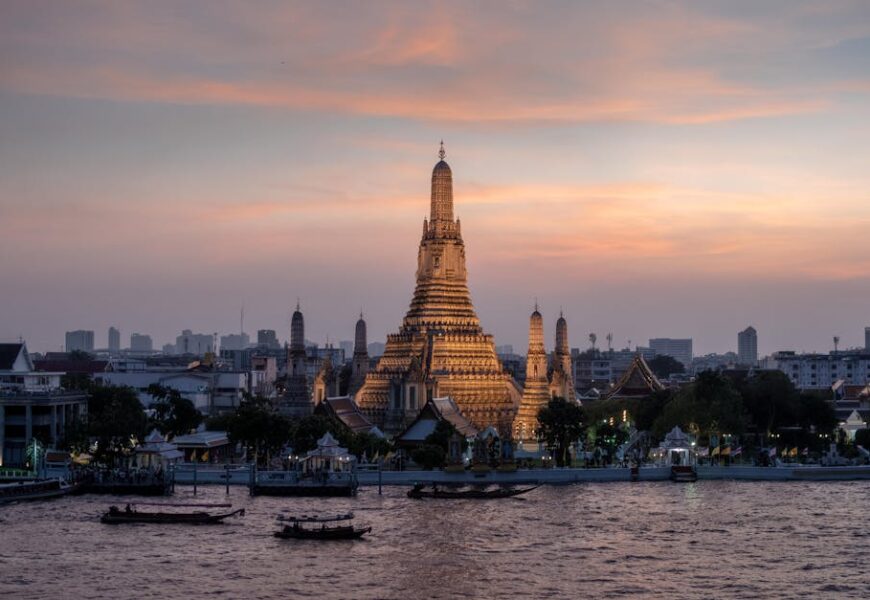Thailand, a vibrant Southeast Asian nation, boasts an incredible array of cities that blend ancient traditions with modern urban experiences. From bustling metropolitan centers to historic cultural hubs, Thailand’s urban landscapes offer travelers and residents a remarkable journey through diverse environments. Each city presents a unique tapestry of experiences, showcasing the country’s rich heritage, economic dynamism, and extraordinary cultural complexity. Understanding these urban centers provides profound insights into Thailand’s social, economic, and cultural evolution, making them far more than mere geographical locations.
Bangkok: The Pulsing Metropolitan Heart of Thailand
Bangkok, Thailand’s capital and largest city, represents an extraordinary urban phenomenon that seamlessly merges traditional Thai culture with cutting-edge modernity. Home to approximately 10 million residents, this metropolis serves as the country’s primary economic, cultural, and political center. The city’s skyline features an impressive mix of gleaming skyscrapers, historic temples, and traditional markets, creating a visually stunning urban landscape that captivates visitors and residents alike.
Bangkok’s infrastructure is remarkably sophisticated, with an advanced public transportation system including the BTS Skytrain and MRT subway networks. These systems efficiently connect different districts, making urban navigation convenient and reducing traffic congestion. The city’s economic significance cannot be overstated, as it generates approximately 40% of Thailand’s gross domestic product and hosts numerous multinational corporate headquarters.
Chiang Mai: The Cultural Jewel of Northern Thailand
Nestled in Thailand’s mountainous northern region, Chiang Mai represents a stark contrast to Bangkok’s urban intensity. Often called the ‘Rose of the North,’ this city blends historical significance with contemporary cultural experiences. Founded in 1296, Chiang Mai was the capital of the ancient Lanna Kingdom, and its rich heritage is evident in its numerous historic temples, traditional architecture, and deeply rooted cultural practices.
With a population of around 200,000, Chiang Mai offers a more relaxed atmosphere compared to Bangkok. The city has become a significant hub for digital nomads and creative professionals, attracting international talent with its affordable living costs, excellent quality of life, and robust technological infrastructure. Its numerous co-working spaces and international communities make it an increasingly popular destination for global professionals seeking alternative urban experiences.
Phuket: Thailand’s Premier Coastal Urban Destination
Phuket, Thailand’s largest island, represents a unique urban environment that combines coastal beauty with sophisticated infrastructure. As a major tourist destination, the city attracts millions of international visitors annually, contributing significantly to Thailand’s tourism economy. Its urban landscape features a remarkable blend of traditional Sino-Portuguese architecture, modern resorts, and vibrant commercial districts.
The city’s economy is predominantly tourism-driven, with sophisticated hospitality infrastructure supporting international travelers. Phuket’s international airport serves as a critical transportation hub, connecting the island to major global destinations. Beyond tourism, the city has been developing technology and service sectors, positioning itself as a progressive urban center with diversified economic potential.
Chiang Rai: A Hidden Urban Gem in Northern Thailand
Chiang Rai, located in Thailand’s northernmost province, offers a distinctive urban experience that differs dramatically from larger metropolitan areas. Known for its stunning natural surroundings and rich cultural heritage, the city serves as an important economic and cultural center for the region. Its proximity to the Golden Triangle—where Thailand, Laos, and Myanmar meet—provides unique geopolitical and economic significance.
The city’s urban landscape features a fascinating mix of traditional Thai architecture, modern infrastructure, and stunning natural beauty. Chiang Rai has been increasingly focusing on sustainable tourism and cultural preservation, attracting travelers interested in authentic experiences and ecological awareness. Its strategic location makes it an important commercial hub for cross-border trade and cultural exchange.
Emerging Urban Centers: Thailand’s Future Landscape
Beyond these prominent cities, Thailand continues to develop emerging urban centers that showcase the country’s dynamic growth potential. Cities like Khon Kaen and Nakhon Ratchasima are experiencing rapid economic development, attracting investments in technology, manufacturing, and service sectors. These urban areas represent the next generation of Thai economic and cultural innovation.
These emerging cities are implementing smart urban development strategies, focusing on sustainable infrastructure, technological integration, and quality of life improvements. They demonstrate Thailand’s commitment to balanced national development, ensuring that economic opportunities are not concentrated exclusively in traditional metropolitan areas.
Thailand’s urban centers collectively represent a fascinating narrative of cultural preservation, economic dynamism, and forward-thinking development. From the bustling streets of Bangkok to the serene landscapes of Chiang Mai, each city offers a unique window into the country’s complex social and economic fabric. Travelers and researchers alike will find these urban environments endlessly fascinating, providing deep insights into Thailand’s remarkable journey of modernization while maintaining its rich cultural heritage.









